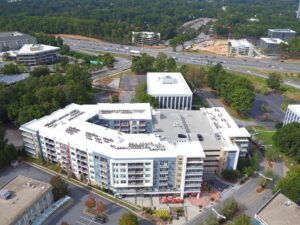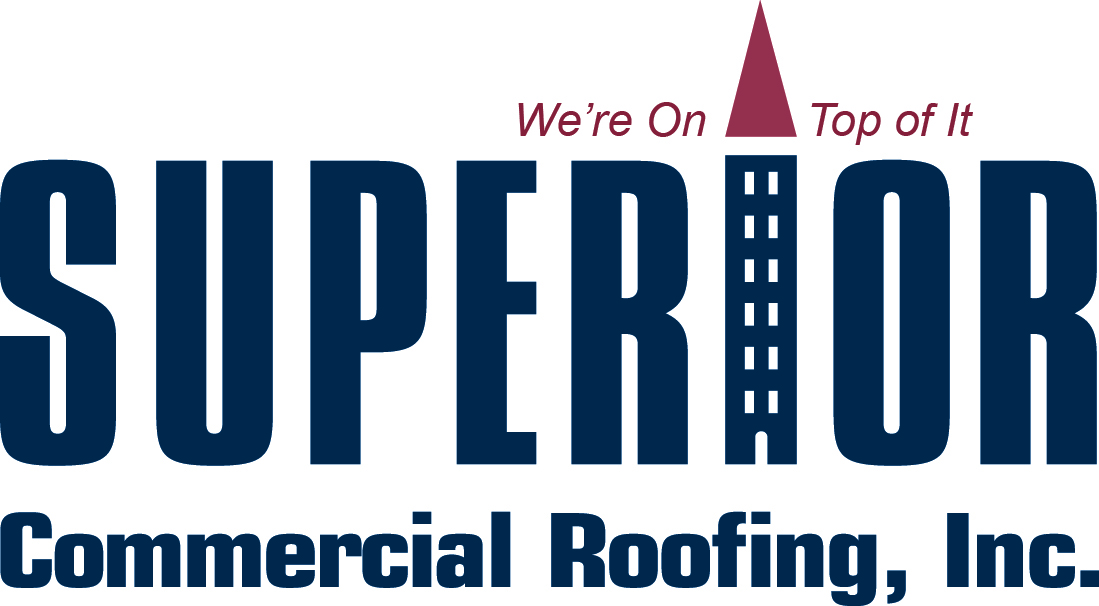by Connor | Mar 21, 2022 | Roofing

Aerial thermal imaging services with the help of drones equipped with special cameras are addressed to purposes other than standard filming and photography. The most frequent uses of drones with infrared cameras are related to rescue operations, search, inspecting installations, pipes, power lines, and even roofs.
According to Superior Commercial Roofing & Contracting professionals, drone and thermal roof inspections can be an extremely effective method of roof maintenance. Checking a roof is not easy because it involves working at height, so you need professional protective equipment. In addition, identifying problems with the roof (small cracks that allow water to seep in) is not easy to do with the naked eye, but a thermal imaging camera installed on a drone will do the job without any problems. Thermal scanning provides information on the percentage of roof sealing and areas that allow water infiltration, generating thermographic images.
Be careful. However, this method does not eliminate leaks but will only help to identify them! Once you know exactly where the problems are, the repairs will be more efficient, and they will extend the roof’s life span.
Drone and thermal roof inspections are a thing of the future and have meager costs compared to repairing or replacing roofs, so it is efficient to use them in the regular roof maintenance process. This way, you will prevent much more costly incidents.
by Connor | Mar 14, 2022 | Commercial Roofing

Rubber roofing consists of vulcanized membranes, offering unmatched ozone and ultraviolet radiation resistance. Because these membranes do not contain flame retardants or plasticizers, their characteristics stay unchanged and stable over time, making them durable solutions to be used for roofing.
The main advantages of a rubber roof include:
- High flexibility and elasticity – These membranes remain flexible up to temperatures of 45°C and have an elasticity of over 300%, which ensures their resistance to building movements and temperature changes.
- Low operating costs – Rubber roof membranes require a low level of maintenance. Even after a long period of exposure, they can be easily repaired.
In this context, should you worry about caring for your rubber roof? Shortly, yes! If your roof has minimal maintenance requirements, that doesn’t mean you should ignore it.
Caring for your rubber roof in Atlanta should involve a periodic maintenance contract with a licensed roofing company. Practiced Atlanta commercial roofing contractors will check the roof once or twice a year to make sure everything is in order, and if minor problems are identified, they will be fixed before they get worse. The roof will also be cleaned.
Extra care is required when there are roof penetrations (HVAC units, solar panels, etc.).
by Connor | Mar 4, 2022 | Roofing

The ideal roof would be 100% reflective in summer and 100% absorbent in winter, but a roof cannot change its reflective and emission properties. As a result, the overall energy efficiency of a roof must be assessed by comparing the energy saved from temperature regulation during the hot summer months with the energy consumed in the cold season.
TPO membranes – Roof systems that reflect the sun’s rays can save energy and money. They are suitable year round in warm environments, in the hot summer months, and in temperate areas. Reflective roofs are metallic or very light colored, and TPO membranes are typically white or light gray.
In addition to reducing the cooling demand for the entire building, a low roof temperature also increases the efficiency of the installed photovoltaic system. Where there is a HVAC system installed, the efficiency of transporting cold air throughout the building is also dramatically increased. According to flat roofing Atlanta experts, this leads to low energy consumption, an environmentally friendly impact.
PVC membranes can be manufactured in light gray or slate gray, so they have similar properties to TPO membranes when it comes to energy efficiency. Their advantage is better resistance to very high temperatures.
EPDM membranes are dark in color, making them suitable for cold areas with less sunshine. Energy efficiency can still be achieved when they are installed in sunny areas by covering them with a layer of white liquid coating. This will also deliver additional protection.
by Connor | Feb 28, 2022 | Roofing

Flat roofs require a pliable, waterproof cover material that performs well in circumstances where shingles and tiles don’t. Rubber is the most popular flat roof covering option. EPDM, PVC and TPO membranes are the best options in this category for the following reasons:
EPDM membranes
- According to economical EPDM roofing Atlanta contractors, this membrane provides excellent stability against weathering, sun exposure, acids and caustic solutions
- Long-lasting flexibility and elasticity
- Traction resistant
- Easy to apply, partly because they can be manufactured in large dimensions (up to 15m width and 60m length)
- No additional mechanical fastening required
- Unlimited aging resistance – this membrane does not contain plasticizers or antioxidants that would make it susceptible to migration or degradation
- Chemically inert – the composition of the membrane remains constant because it is vulcanized
- More environmentally friendly than other waterproofing materials
- Compatibility with green roofs (root resistance) and photovoltaic systems
PVC membranes
- Used for over 50 years
- Strong fire resistance
- Customized architectural solutions available (colors, profiles and roof logos)
- Suitable for different climatic conditions
- Quick installation independent of the weather (PVC membranes can be installed even in low temperatures or when it rains)
- Vapor permeability
- Great flexibility
TPO membranes
- High chemical resistance
- Suitable for direct application on substrates such as bitumen, EPS insulation, and XPS (polystyrene)
- No plasticizer (no migration/contamination, or perspiration)
- Long lifespan
- Easy maintenance
- Easy handling and installation (no need for fire sources)
- Resistance to severe weather conditions
- Environmentally friendly
by Connor | Feb 21, 2022 | Roofing

The acronym TPO stands for thermoplastic polyolefin, a material originally developed for pond liners and widely used for roofing since the 1980s. It is a single-ply membrane made of a polymerized combination of polypropylene and ethylene-propylene rubber that can be attached to a roof with adhesive or mechanical fasteners.
According to affordable rubber roofing Atlanta contractors, this material is a cheap and efficient choice, and is excellent for large buildings in the Atlanta area because it is designed for flat and low slope roofs. TPO is produced by pouring ethylene propylene rubber into a matrix reinforced with polyester fabrics. The hardened membrane perfectly combines weather resistance with the good heat welding capacity of the plastic, resulting in flexible sheets with an extremely good flatness.
TPO membrane is also very easy to install, ensuring economical and fast roof covering.
The exposed surface is usually reflective white, which makes TPO membranes suitable in Atlanta’s humid subtropical climates, contributing to the energy efficiency of the building- it is well known that white and very light shades reflect the sun, so the roof will not absorb the heat. This roofing material can also be easily recycled. All these ecological advantages make TPO membrane a good choice for all your roofing projects.





